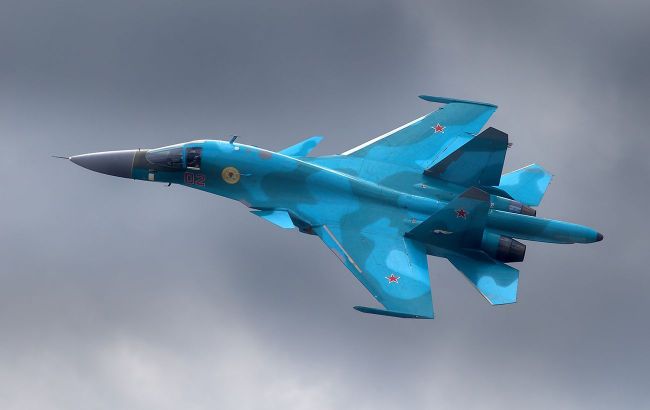Russia’s Kinzhal Missile Claim: Propaganda or Pilot Shortage Revelation?
In a recent article published by the Russian Ministry of Defense’s newspaper, Krasnaya Zvezda (Red Star), a claim emerged regarding the launch of a Kinzhal air-launched ballistic missile from a Su-34 front-line bomber. This assertion, based on a sign displayed in the Patriot propaganda park, alleges that a crew under the command of Colonel Maxim Stefanov successfully deployed the Kinzhal missile from a Su-34 aircraft for the first time under combat conditions. While the report highlights Stefanov’s extensive experience as a test pilot, spanning two decades, it lacks official confirmation from the Russian Ministry of Defense, raising questions about the veracity of the claim. The report further identifies Stefanov as the deputy head of a unit within the 929th Flight Training Center at the Ahtubinsk airfield, a location also known for housing the Su-57 fifth-generation aircraft.
Defense analysts have expressed skepticism about the claim, highlighting inconsistencies and potential underlying issues within the Russian Air Force. Stefanov’s position as a deputy head within a training center suggests a primarily theoretical role, yet his reported involvement in combat sorties raises concerns about a potential shortage of qualified pilots within the operational forces. The report’s mention of Stefanov flying both Su-35 and Su-34 aircraft and engaging targets in Ukraine further reinforces this speculation. Instead of showcasing a "propaganda success," the report may inadvertently reveal a critical vulnerability in Russia’s military capabilities – a dependence on experienced test pilots to fill the gaps in their operational pilot roster, a situation indicative of potential strain on their resources.
The unusual nature of the alleged Kinzhal launch from the Su-34 platform raises further questions. If the Russian military had indeed achieved this capability, the lack of subsequent reported deployments from the same platform suggests potential technical or logistical challenges. This inconsistency casts doubt on the practicality and reliability of using the Su-34 as a Kinzhal launch platform, suggesting that the initial claim might be exaggerated or even fabricated for propaganda purposes.
The Kinzhal missile itself is a subject of both intrigue and misinformation. Often touted as a hypersonic weapon, the Kinzhal is more accurately described as an air-launched ballistic missile. While capable of reaching high speeds (up to Mach 12), its trajectory and characteristics distinguish it from true hypersonic missiles. The Kinzhal can be equipped with either nuclear or conventional warheads, the latter being primarily used against targets in Ukraine. Launched from MiG-31K aircraft, the missile has been deployed in the Russo-Ukrainian war since March 2022, triggering widespread air raid alerts across Ukraine due to its long range (up to 2,000 km).
The potential implications of using the Su-34 as a Kinzhal launch platform are significant. While the MiG-31K is a specialized interceptor optimized for high-altitude, high-speed flight, making it suitable for launching the Kinzhal, the Su-34 is primarily a tactical bomber designed for ground attack roles. Adapting the Su-34 for Kinzhal launch would likely require significant modifications, affecting its performance and operational characteristics. Moreover, the Su-34’s lower operational ceiling compared to the MiG-31K could impact the Kinzhal’s range and effectiveness. The claim, if true, raises questions about the strategic rationale behind such a modification.
The report of the alleged Kinzhal launch from the Su-34 emerges amidst heightened tensions and increased warnings from international bodies about potential escalations in the Russo-Ukrainian conflict. The US Embassy had previously issued a warning regarding a heightened threat of Russian attacks on Ukrainian infrastructure, underscoring the volatile security situation. The timing of the Kinzhal claim, coupled with the ambiguities surrounding its veracity, further complicates the ongoing conflict and raises concerns about potential miscalculations and escalations.
In conclusion, the report of the Kinzhal missile launch from a Su-34, while presented as a testament to Russian military prowess, raises more questions than it answers. The inconsistencies in the narrative, the lack of official confirmation, and the potential revelation of pilot shortages within the Russian Air Force cast doubt on the credibility of the claim. Furthermore, the technical and strategic implications of using the Su-34 as a Kinzhal launch platform remain unclear. As the conflict in Ukraine continues, the dissemination of such ambiguous and potentially misleading information underscores the challenges of navigating the complex information landscape and the importance of critical analysis in assessing the validity of such claims.


